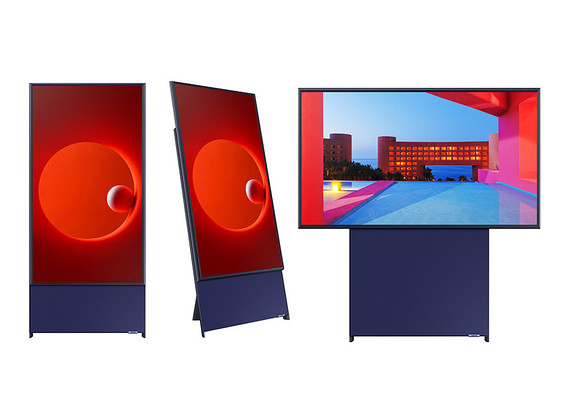With talk about artificial intelligence, virtual reality, smartphones and computers, we’re forgetting an important piece of technology that’s falling by the wayside: television.
Ever since John Logie Baird’s first public demonstration in England in 1927, TV has gone through a series of upgrades. It became slimmer, digital and, finally, increased its resolution and screen size. That hasn’t stopped the decline in viewership, though, and if projections are accurate, this trend is likely to continue.
Still, world leaders in screen and digital technology are coming up with new ways to make television relevant again. Here are some of the most exciting technologies to look forward to:
8K
 Bloomberg
Bloomberg
Although the first 8K TV was unveiled by Sharp at the Consumer Electronics Show (CES) in 2012, TV broadcast in 8K wasn’t available to viewers until 2018. You still need a special receiver and antenna, as well as four HDMI cables to send the signal from the receiver to a device. At the moment, NHK Japan is the only 8K signal provider, so getting an 8K TV may not be worth it.
Online content is in a marginally better position — Rakuten TV promises an 8K-capable streaming service by the end of the year, but the question remains: Is there enough of it available to really make a difference? Probably not. And let’s not forget other factors, such as streaming bandwidth requirements and higher prices compared to 4K and HD.
So is 8K doomed to fail? If you ask me, absolutely not. The same things were said about 4K, and there’s no lack of such content on the market right now — consoles support this resolution, and major streaming services like Netflix NFLX, -2.44% Disney DIS, -0.12% subsidiary Hulu and YouTube (a unit of Alphabet GOOG, -1.28% GOOGL, -1.33% ) already have a 4K option. It’s clear that 8K is the future, but right now, the tech is enticing only to early adopters.
Reinventing TV
 Samsung
Samsung
Samsung’s Sero is a 43-inch television that can pivot vertically. That may sound gimmicky, but in truth, it’s an important indicator that the industry is becoming less conservative and more in line with the expectations and lifestyles of its consumers. In this case, Samsung predominantly targeted millennial customers, making it easier for them to project content from smartphones to the TV screen. In that sense, we see that TVs are moving further away from their traditional analog role and becoming yet another big screen capable of projecting digital (both online and offline) content. Sero will also enable Bixby (Samsung’s voice assistant), making it seem more like an enlarged mobile device.
The Frame and Serif TVs from Samsung are trying to reinvent television as a stylish piece of furniture and not the center of attention. With painting-like frames (some variants even come with a fake wood bezel) and concealed cables, the Frame TV looks more like a sophisticated digital photo frame than your average TV. The Serif TV goes a step further — it comes with a shelf on the top and fabric that conceals ports on the back. Its name is derived from the shape of its bezel, and in the words of a Samsung executive, it “looks nothing like a TV.” Both models focus on aesthetics, with function coming in a close second. I’m certain this trend will continue, as TV no longer reigns supreme in the living room entertainment ecosystem of the average consumer.
Modular TVs
Customizability is everywhere. You can decide what components you want in your PC, your car, your home. So why not build your own customized TV? Again, Samsung is leading the way with its MicroLED modular TV — a big brother of “The Wall” model it showcased at CES 2018 (pictured at the top of this article). The MicroLED is built from 12-by-12-inch display tiles, and, fully assembled, offers 219 inches of diagonal bliss. The process takes mere minutes, and Samsung promises great picture quality and excellent viewing angles once this technology gets translated into a real consumer product.
There are many reasons why modular television could be the future: It could finally offer budget-scalable products that would fit perfectly in any allotted space in the living room. Users could “build their TV as they go” and buy panels individually instead of in bulk. These visual building blocks — display tiles — also have a ton of potential for interior design, from picture frames to installations that cover up entire walls. I’m excited to see the main use case for these screens as they hit the shelves (release dates are still unknown).
I’m sure you can see the trend here. TV is no longer the king of the living room, but it’s still a screen, and we need screens in this digital day and age. So why not make it the best — the biggest, the most customizable, the most beautiful — screen in the room?
And that is precisely where the industry seems to be going. Modern displays will be made to enhance your digital life, not dominate it. I expect to see flexible and transparent displays.
Do you think TV has a place in a modern home? Please let me know in the comment section below.
Jurica Dujmovic is a MarketWatch columnist.










Add Comment